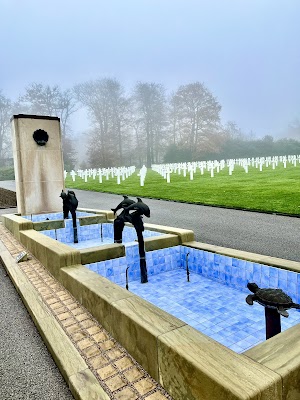Roman Villa Nennig (Römische Villa Nennig)
Overview
In the lush, rural expanse of the **Grevenmacher District** in Luxembourg, the **Roman Villa Nennig** stands as a remarkable testament to the grandeur and sophistication of Roman architecture and lifestyle. Dating back to the **3rd century AD**, this archaeological gem offers a captivating glimpse into the luxurious lives of affluent Roman citizens who once inhabited the region.
The Villa Nennig was part of a larger estate, serving both as a residence and a center for agricultural management. Its strategic location in the fertile **Moselle Valley** provided optimal conditions for farming and viticulture, making it a coveted property during the Roman era. The Romans who constructed the villa utilized advanced techniques in stone and mortar, creating a durable structure that has remarkably withstood the test of time.
Upon entering the villa grounds, visitors are immediately struck by the stunning **mosaic floor** of the triclinium (dining room), hailed as one of the finest examples of Roman mosaic art north of the Alps. Spanning approximately **160 square meters**, this intricate mosaic depicts various scenes of Roman life, including gladiatorial combat, hunting scenes, and mythological figures. The vibrant colors and elaborate designs were crafted using small, meticulously arranged pieces of colored stone and glass, known as **tesserae**, showcasing the skill of the artisans who worked under the patronage of the villa's wealthy owner.
The villa's layout was designed for both comfort and efficiency. It featured a central courtyard, known as an **atrium**, surrounded by a series of rooms, including living spaces, storage areas, and baths. The arrangement of the rooms ensured privacy and ease of access, enhanced by large windows that allowed for ample natural light and ventilation. The presence of a **hypocaust system**, an ancient Roman underfloor heating system, indicates that the villa's inhabitants enjoyed a level of comfort that rivals modern standards.
Excavations of the site have revealed that the villa was richly adorned with **frescoes** and sculptures, further emphasizing the opulence of its owners. These decorative elements often depicted scenes from mythology and nature, serving both aesthetic and educational purposes. The frescoes were created using pigments mixed with water applied to fresh plaster, a technique known as fresco, which ensured the longevity and vibrancy of the artwork.
The villa also played a significant role in the local economy. Agricultural activities, particularly the cultivation of grapes and the production of wine, were integral to the estate. The Romans introduced advanced farming techniques, including crop rotation and irrigation, which significantly enhanced productivity. Archaeological findings, such as the remains of storerooms and wine presses, provide compelling evidence of these agricultural practices.
Over the centuries, the villa experienced periods of decline and abandonment, particularly following the fall of the Roman Empire. It was gradually buried under layers of earth and forgotten until its rediscovery in the **19th century**. Since then, extensive archaeological excavations have been conducted to uncover and preserve its historical significance.
In recent times, significant efforts have been made to protect and restore the **Villa Nennig**, making it accessible to the public. Visitors are invited to explore the site and marvel at the stunning mosaics, gaining insight into the luxurious lifestyle and advanced technologies of the Roman era. Informative interpretative displays and guided tours provide valuable historical context, allowing visitors to appreciate the ingenuity and artistry that went into building and decorating the villa.
The Roman Villa Nennig stands not only as a historical monument but also as a symbol of the cultural exchange and technological advancements brought about by the **Roman Empire**. Its preservation ensures that future generations can continue to learn from and be inspired by this remarkable piece of history, nestled in the charming **Grevenmacher District** of Luxembourg.








